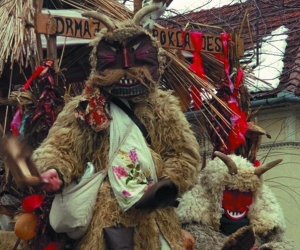|
Town with about 20,400 inhabitants on the bank of the Danube, one of the first independent settlements founded by the conquering Hungarians. The town celebrated the 900th anniversary of its existence in 1993. On 29th August, 1526 next to the town the Hungarian army under the leadership of King Louis II. was defeated by the troops of sultan Soliman the Great. On the site of the king´s death, a commemorative column was erected in 1867. One of the interesting architectural sights of the town is the Grand Church; the foundation-stone of the church was laid by Gyula Zichy, archbishop of Kalocsa in 1926, the year of the 400th anniversary of the battle fought against the Turks. Town Hall in Hungarian style, built with Eastern motives on the square. The Historic Memorial Place of Mohács on the site of the battle was inaugurated on the 450th anniversary. In the Kanizsai Dorottya Museum, the history of the battle is illustrated. There are several valuable baroque ecclesiastical buildings in the town including the inner city Roman Catholic church (1790), the church of the Roman Catholic Episcopacy (1743), the Calvinist church (1770), the former Franciscan church and monastery (1771), the Greek Orthodox Serbian church (18th century) and the Saint James chapel. The Busó Festivity is a traditional event in Mohács, which originates from the Turkish times. According to the legend the locals could hide in the marshes and reeds of Mohács island. The festivity, which evokes the expulsion of the Turks, the farewell-to-winter and the end of the carnival season attracts many visitors. Lodgings in Mohács: More lodgings in Mohács Pictures of Mohács
|
Mohács map nagyítása >>
|
|
|
Hungary - Mohács |
|
|
|
||
|
Friday, 4. July 2025. - 03:04:43 |
||
